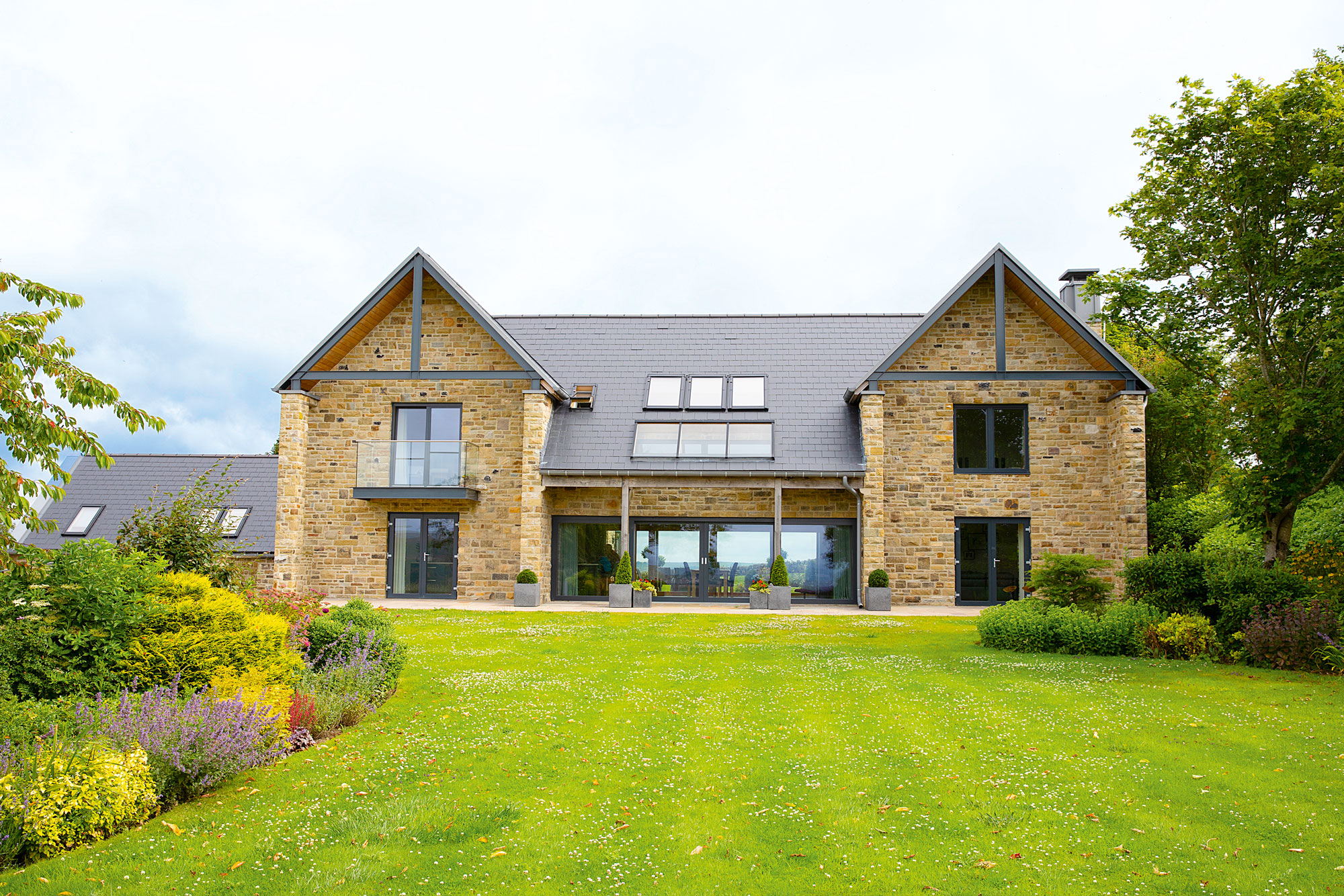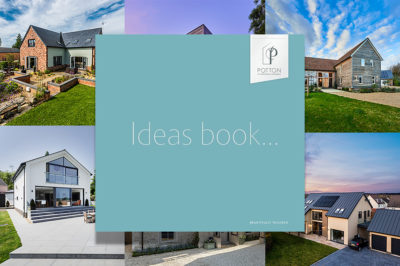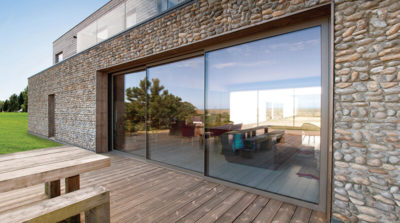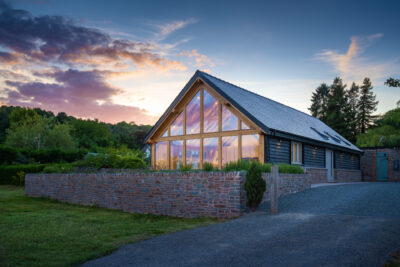Should You Demolish and Rebuild?
It might seem a little counter-intuitive to take a perfectly good house and knock it down to build a new one in its place. Why not renovate, extend or bolt another storey onto the existing building? Surely that would make better sense financially? In some circumstances this is the case and, of course, a lot of people choose to take the home improvement route to great effect.
Learn more: Renovation Guide – How to add value to a property
However, in many parts of the UK knocking down and rebuilding is by far the most cost-effective solution – and in areas where individual plots are rare, it is often the best way to secure the home that you want.
Here, I’m looking at the pros and cons of knocking down and starting again.
Why demolish & rebuild?
Houses can’t last forever. Many of the homes now available on the open market were built between the late Victorian period and the mid-1970s. They were designed and constructed for very different generations, with completely different expectations in terms of lifestyle, comfort and energy efficiency.
What’s more, prior to 1948 (without the influence of modern planners) anything went – so there are some pretty eccentric properties out there, which can be hard to sell.
This old stock comprises largely of houses that were originally built with no central heating system and little or no insulation. They typically have much smaller rooms, each with
a specific function but often without the creature comforts and flexibility we have come to expect from modern designs. Plus early properties in this period didn’t even have a bathroom, let alone an ensuite.
What they did have, at least in more rural locations, was land. If you had plenty of this before the Town and Country Planning Act came into force back in 1947, you could basically build whatever you wanted on your own property.
So this often meant that – by modern standards – relatively modest homes were being built
on very generous plots.
The usual candidates up for replacement are bungalows and detached houses built between the post-war austerity era (so from the late 1940s) and the decade that architecture forgot (the 1970s).
What properties are OK to knock-down and rebuild?
Obviously, terraced houses and even semi-detached ones are trickier to replace, as you will usually need to secure consent to demolish and replace several homes at once.
Without the agreement of everyone, that’s not going to happen. Some terrace renovations in high-value areas involve gutting the building to little more than the adjoining wall and the facade – but this kind of project won’t count as a full self build for VAT purposes (more on this later).
You also need to consider whether older properties with character would be better off being refurbished rather than replaced, as there is still a strong market for period houses.
What’s more, examples with historical or architectural significance will have been protected by the listed buildings scheme – although there are still a huge number of characterful properties that have not been listed.
You’ll soon find out if you have a building that has fallen through the net, as preservation orders can be obtained quickly if someone spots a structure about to be demolished that should be saved.
An interesting point someone made to me recently was that you rarely see an oak frame house being replaced. They tend to be built with longevity in mind, probably centuries, while most modern homes have a design life of 60-80 years.
It’s not that your home will fall down at that point, but more likely that tastes and lifestyles will have evolved so much by then, it’s time for something new.
Planning policies for replacement dwellings
Because many replacement projects involve small existing homes on large plots, increasing the footprint or volume of the property is usually possible – but you will need the agreement of the local planners.
A pre-planning application meeting to assess what might be possible will pay dividends here. Many councils have their own targets to achieve energy efficient properties, and it’s often possible to argue that the much larger house you propose to build has a lower environmental impact than the smaller one it will replace, which can work in your favour.
In designated green belt areas, new development is generally prohibited, but replacement dwellings are considered more acceptable. Most local authorities will have set out strict policies on what they will allow in terms of increases in footprint and/or volume in green belt.
One pitfall to be aware of is that, if a property is too rundown or hasn’t been lived in for many years, your local planners may consider its residential use to be abandoned. This could make it unsuitable for rebuilding, so it’s worth checking in with your authority before you buy.
Read more: Planning for Demolishing & Rebuilding a House
Financial benefits of replacement dwellings
If you look at the value of building plots, you’ll often see that they cost as much or often more than the price of an existing property on the open market – particularly in the south
east and south west of England, where demand is highest.
This is because the value of land is not dictated by what is currently on it, but more to do with what could be there if the plot was properly developed.

Bill and Carol Haygarth demolished their 1980s house to create an award-winning contemporary home that makes the most of its elevated position
So while it may feel a bit odd offering to buy a house with the intention of immediately throwing it away, it’s not as daft as it sounds.
Demolishing a property is not that expensive. I would budget around £8,000-£10,000 to knock down a three bedroom bungalow, and half as much again for a larger house. Gravity does most of the work and the main cost is to do with disposing the waste.
You will need to have building control approval to go ahead and demolish, which will entail the commissioning of environmental and asbestos surveys before any work commences.
You might be able to salvage some materials from the structure, such as tiles and period features, but don’t think about keeping the foundations.
I’m often asked about whether they can be reused and the answer is possibly, but don’t bother. They will not be to modern standards and will limit the design and layout of any new property, so it’s best to start again.
A word of caution here; make sure if you’re borrowing that your lender is happy for you to demolish and rebuild the property, because finance is offered against the existing structure in most cases. Seek the advice of a specialist self build mortgage broker if you’re in any doubt.
Explore our directory to find specialist offering Finance & Professional Services.
VAT for renovation versus rebuild
The clincher – and the key reason why demolition and rebuild trumps refurbishment or extension – is the VAT situation.
You can reclaim on the materials used to build a new property and labour is zero rated, but work on an existing structure attracts 20% VAT on both materials and labour.
It doesn’t take the brains of an archbishop to work out that the cost of demolition, and possibly the design fees, will be less than the tax bill for doing a renovation. You might even end up with some cash left over that otherwise would have gone to the Chancellor.
The rules say that you can keep one, or sometimes two external walls of the old property and still claim the VAT back as a new dwelling – but it’s worth checking that this will be acceptable before going ahead.
Other benefits of demolish & rebuild
Any existing property is likely to have access to the services that you will need for your replacement dwelling: electricity, water, foul drainage and possibly mains gas.
These services can be isolated before the house is knocked down and reconnected to the new dwelling. If you consider the cost of getting services to a virgin plot in the middle of nowhere, then this can represent a significant potential saving.
There are also bonuses, such as the fact easements and wayleaves for managing the property will already be in place. The same is true of rights for vehicular and pedestrian access – this is often overlooked on new plots and can be expensive and time-consuming to obtain.
Of course, your new home will also be far more comfortable and efficient than the building it is going to replace, with an internal layout that meets your expectations for modern living.
Does knock down & rebuild work everywhere?
As with any kind of project, you’ll need to do your homework regarding the financial and legal viability of demolition and replacement.
Where plots are in reasonable supply and therefore relatively inexpensive – parts of Scotland spring to mind – there’s little point going through the rigmarole of knocking down and rebuilding. In these cases it’s much more straightforward to just find a nice plot and start from scratch.
The same could be said for parts of south Wales and the north of England, where the price of houses on the open market means the uplift in value from replacement is be guaranteed.
There are no hard and fast rules, though, and in hotspots throughout the country, the numbers can stack up. In the south of England, more often than not, they do – but you can get caught out if you pay too much for the property you intend to replace.
































































































 Login/register to save Article for later
Login/register to save Article for later












